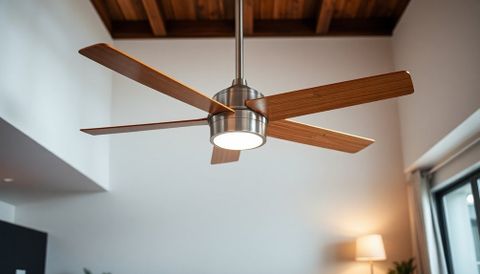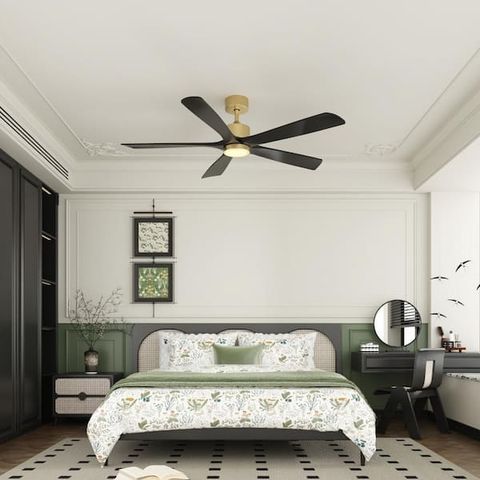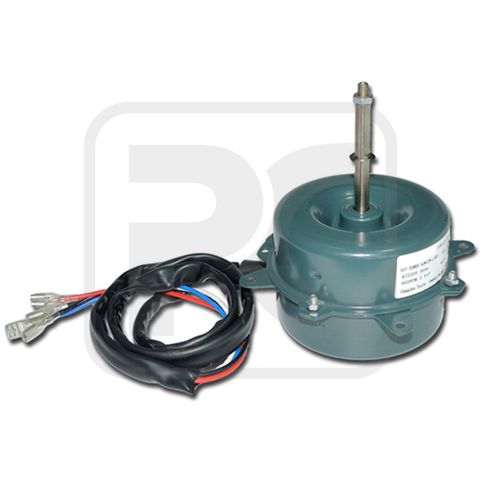When you’re out in the elements, the choice between DC and AC motors isn’t just about specs on a datasheet. It’s about how your motor handles the real world – from rain and sun to temperature swings and dust. These two powerhouses each have their strengths and weaknesses when facing the unpredictable forces of nature.
Picture this: You’re planning a garden irrigation system, a small outdoor fan, or perhaps a drone that needs to fly through variable weather conditions. The decision between DC and AC motors might seem straightforward on paper, but the real test happens when these motors hit the open air. What actually happens when you take these electric beasts outside? How do they cope with humidity, temperature changes, and the elements? Let’s dig into how these motors truly perform when they’re no longer tucked away in controlled environments.
Weather Resistance and Environmental Toughness
The first thing that separates outdoor motors is how well they handle weather. DC motors often shine in this department, especially when properly sealed. Their simpler construction means fewer points where moisture can sneak in. Many DC motors used in outdoor applications come with IP65 or higher ratings, which means they can handle dust and water jets. Think of a garden sprinkler system that keeps running even during light rain. AC motors, while powerful, tend to be more vulnerable to moisture. A typical AC motor without proper sealing will start to struggle within weeks of regular outdoor exposure. The windings can get damaged, and the bearings may fail faster due to moisture infiltration. But here’s the catch – modern AC motors designed for outdoor use are getting better. They’re being built with better seals and materials. The key is knowing what you’re getting. A basic AC motor meant for indoor use? Not ideal for outdoor work. A high-grade outdoor AC motor? It can hold its own against the elements. The difference comes down to design and price tags. Some outdoor AC motors cost significantly more because of the extra protection features. That investment can pay off if you’re dealing with harsh conditions regularly.
Temperature Performance Variations
Temperature plays a huge role in motor performance, and outdoor conditions can be extreme. DC motors generally handle temperature swings better than their AC counterparts. When it gets hot, a DC motor’s efficiency drops, but not dramatically. The relationship between voltage and speed in DC motors means they can adjust more gracefully to heat. If the motor gets too warm, you can simply reduce the voltage and it’ll still run. This flexibility makes DC motors great for outdoor tools like leaf blowers or outdoor fans that might be running in direct sunlight. AC motors, however, are more sensitive to temperature changes. As temperatures rise, their torque output drops significantly. This matters a lot when you’re running something like a portable generator or outdoor pump. In hot weather, an AC motor might not deliver the full power you expect. That’s why you’ll often see AC motors in outdoor applications paired with cooling systems or forced ventilation. The bigger the motor, the more pronounced this effect becomes. A small AC motor might barely notice a few degrees of heat, but a large industrial motor could see its performance drop by 20% or more in extreme heat. So if you’re working in hot climates, DC motors often offer more consistent performance.
Power Supply and Energy Efficiency
This is where things get interesting. DC motors typically require a power source that provides direct current, which means you often need converters or batteries. For outdoor applications, this can be both a blessing and a curse. On one hand, battery-powered DC motors give you complete freedom from electrical outlets. You can run them anywhere solar panels or batteries provide juice. On the other hand, managing battery life in outdoor conditions can be tricky. Batteries drain faster in cold weather, and recharging in sunny conditions requires careful planning. AC motors, meanwhile, can draw power directly from standard outlets. That’s convenient for outdoor applications where you have access to electricity. But there’s a trade-off. AC motors often consume more energy than DC motors for the same work. They’re less efficient at converting electrical energy into mechanical motion. However, in outdoor settings where you have reliable power sources, this inefficiency might not matter much. For example, a large outdoor fan powered by AC might run continuously for months without issues, whereas a DC version would need constant battery management. The efficiency gap is narrowing though. Modern DC motors, particularly brushless versions, are becoming increasingly efficient. They’re starting to close that gap with AC motors in many outdoor applications.
Maintenance Requirements and Lifespan
Let’s talk about upkeep. DC motors generally need less maintenance, especially brushless types. They have fewer moving parts, and the absence of brushes means no wear from friction. This translates to longer lifespans and less downtime. A well-maintained DC motor in outdoor conditions can last decades. AC motors, particularly those with brushes, require more attention. Brushes wear down over time and need replacement. In outdoor environments, this wear accelerates due to dust and moisture. Bearings also face more stress in outdoor conditions. The average lifespan of an AC motor in outdoor use is shorter than a DC motor, unless you’re using premium models designed specifically for outdoor conditions. That said, AC motors are often cheaper upfront. So if you’re replacing motors frequently due to harsh outdoor conditions, the initial savings might offset the need for more frequent maintenance. It’s a balance between upfront costs and long-term expenses. Consider a small outdoor fountain pump. A DC motor might cost more initially, but it could save you money over time due to reduced maintenance and longer service life. An AC motor might be cheaper to buy, but you’ll likely replace it sooner in harsh outdoor conditions. The type of maintenance also differs. DC motors need cleaning and occasional lubrication, while AC motors might need bearing replacement and brush changes. Both require regular inspections, but DC motors are generally more forgiving.
Speed Control and Responsiveness
How quickly can a motor respond to changes? This matters a lot in outdoor applications. DC motors excel here. They offer excellent speed control across a wide range. You can easily adjust the speed by changing the voltage. This makes them ideal for applications like adjustable outdoor lighting or variable-speed fans. The responsiveness is immediate – turn up the voltage, and the motor responds instantly. AC motors are more limited in this area. Speed control typically requires additional components like variable frequency drives or electronic controllers. These add complexity and potential failure points. In outdoor settings, that complexity can be a liability. Simple AC motor speed control works best when you’re running at a fixed speed. Variable speed is possible, but it’s more expensive and complicated. For example, a simple outdoor fan with fixed speed might be perfectly fine with an AC motor. But if you want to adjust the fan speed based on temperature or user preference, a DC motor gives you much more flexibility. The speed response in DC motors is also more predictable. No surprises when you change the voltage. AC motors can be tricky because of how they interact with power supplies and load changes. In outdoor environments, where loads might vary suddenly, this predictability matters. A DC motor will keep spinning consistently even if the load changes slightly. An AC motor might stall or behave erratically under similar conditions. That reliability in outdoor conditions is crucial.
Cost Considerations and Practical Applications
Money talks, and it’s important to know what you’re spending. DC motors often come with higher upfront costs, especially the premium versions designed for outdoor use. But they can save you money in the long run. Think about a solar-powered outdoor security camera system. A DC motor might cost more initially, but it uses less power and requires less maintenance. Over a year, the savings on electricity and maintenance can outweigh the initial investment. AC motors are cheaper to buy, but they often cost more to operate and maintain. The power consumption difference is significant. For example, a 100-watt DC motor might provide the same output as a 150-watt AC motor. That 50-watt difference adds up over time, especially with continuous outdoor operation. Another factor is installation. AC motors often need more complex wiring, including ground connections and safety features. DC motors can sometimes be wired more simply, especially when battery-powered. Consider a small outdoor fan for a greenhouse. An AC motor might be cheaper, but it needs a dedicated electrical circuit and safety grounding. A DC motor could run on a simple battery pack and be installed anywhere. The practicality of installation affects overall costs. Outdoor applications also mean considering replacement costs. If you’re in a remote location, having a motor that lasts longer saves you the trouble of frequent replacements. DC motors often win here. They’re more durable and less prone to catastrophic failures. When they do fail, it’s usually gradual rather than sudden. This predictability helps with planning and budgeting for outdoor equipment maintenance.
So what’s the real story here? Outdoor motors aren’t just about technical specifications. They’re about how well they survive the real world. DC motors tend to be more resilient, easier to maintain, and better suited for variable conditions. They shine in situations where you need reliable performance over long periods, especially in harsh environments. AC motors are powerful and convenient when you have reliable power sources, but they’re more sensitive to environmental factors. The choice really depends on your specific situation. Are you working in a location with consistent power? Then AC motors might make sense. Do you need something that works reliably in all weather conditions? DC motors often win that battle. The key is understanding what you’re asking from your motor. Will it be exposed to the elements? How critical is reliability? What’s your budget for maintenance and replacements? These questions guide the right choice. Both motors have their place in outdoor applications. The trick is matching the motor to the job. Whether you’re designing a new outdoor system or upgrading an existing one, consider the real-world performance differences we’ve explored. Sometimes the most expensive option isn’t always the best one. Sometimes the cheapest solution isn’t the most practical. Understanding how these motors behave in real outdoor conditions helps you make smarter decisions. The right motor for your outdoor application could save you time, money, and headaches down the road. That’s the real value of knowing how DC and AC motors perform when they’re actually put to work outside.














